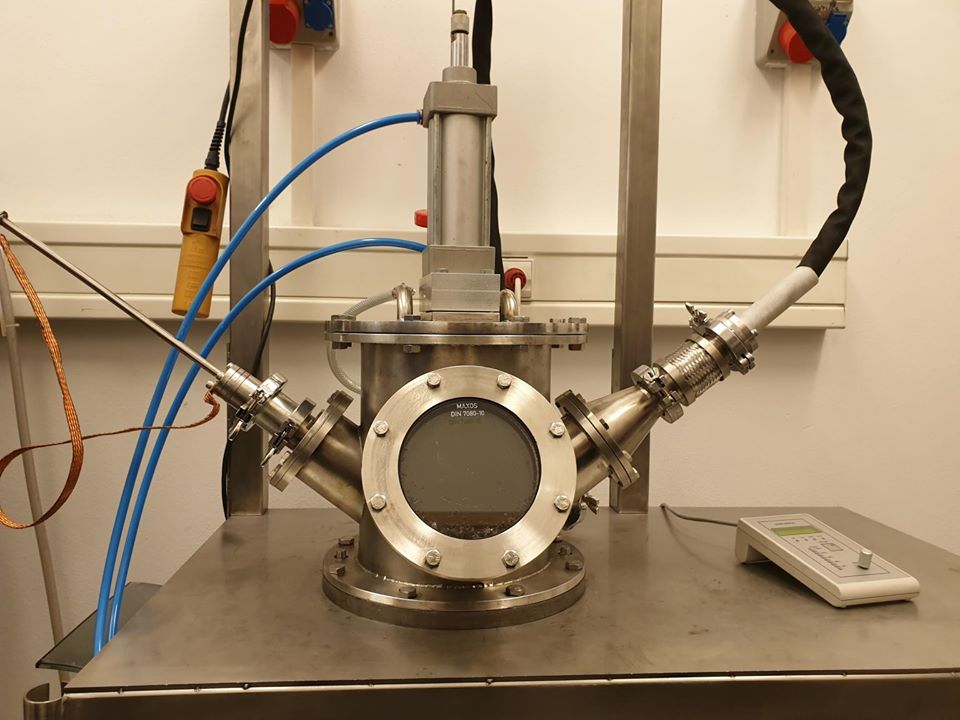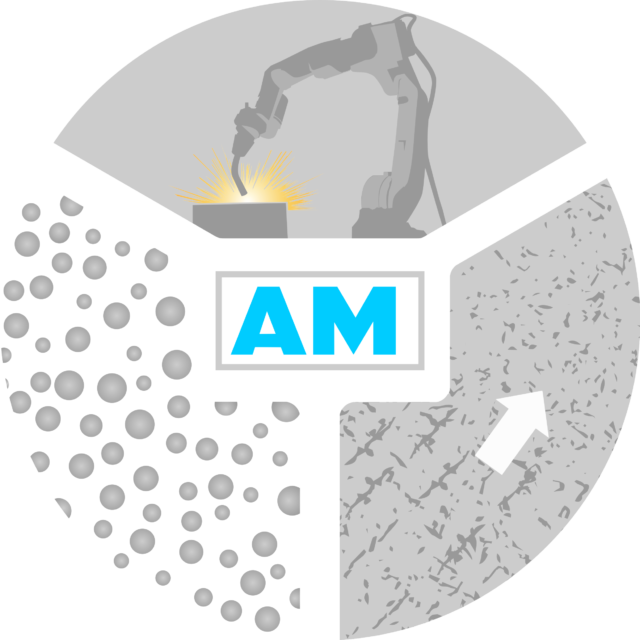The ultrasonic atomizer from Polish company Amazemet is capable of creating powdered 3D printer feedstocks from a variety of different source materials. Pure elements, pre-alloyed material, failed prints and other waste can all be easily processed by the system and recycled into fine metal powder. First developed in 2016 at Warsaw University of Technology (WUT), for the past three years the spinout team at Amazemet have been working to refine the process ready for commercialization.
Marking an important stage in this time to market, the company has now produced its first prototype metal powder atomizer which is undergoing testing at WUT.

A solution to realize the potential of DMLS
The idea for Amazemet grew out of the work of Łukasz Żrodowski, a materials scientist at WUT. Working with DMLS, Żrodowski realized the potential this method had for working with materials in a way previously unprecedented by industry. “There are materials with extraordinary properties such as metallic glass from which three-dimensional solid objects are often impossible to produce with other methods,” Żrodowski explains, “This makes metal 3D printing not only a process of forming a shape, but also the synthesis of materials with improved properties.”
Thin walled structures, and fine-tuned chemical compositions are some of the benefits yet to be truly unlocked by metal additive manufacturing. Scientists exploring these opportunities however are met with a challenge in material supply.
“Traditional methods of powder production require either high capital expenditure or a multi-stage procedure of forming the material into a wire,” explains Żrodowski, “In both cases, it was not possible to quickly produce a powder suitable for 3D printing on laboratory scale.” The Amazemet solution therefore was developed to fulfill the needs of researchers.
Sustainable metal powders
Rather than other frequently used methods that harness the power of gas or plasma for pulverization, Amazemet uses a process of ultrasonic atomization. Named rePowder, the method is capable of producing powder only in the quantities (up to 10kg/h) specified for research purposes. By recycling used and waste materials, the method also reduces the cost of production when using a virgin source material.
A full powder production cycle from, for example, a failed print through to usable material, is performed within one rePowder device. The powders created can then be directly fed to a DMLS 3D printer to created a closed loop R&D system in accordance with the principles of circular economy.

Such a novel system is a necessary requirement of the growing metal additive manufacturing sector. As hardware continues to improve, machine manufacturers and customers need high performing materials to validate the technology. Sustainability is also an important buy-in, especially in verticals like aerospace and automotive that have governmental and society pressures to reduce their footprint.
6K, the rebranding of Massachusetts material manufacturer Amastan Technologies, is another company that has recently emerged with a more sustainable solution for powder production and reuse. Similarly, the 6K’s process can use waste material as a source for metal powder production. The way this method differs from Amazemet however, is in the use of microwave plasma technology.
Amazemet has now produced a prototype rePowder device that should see commercial use in the near future. Still working within WUT, immediate beneficiaries of the system are expected to be other researchers working in biomaterials, aerospace and functional materials.
For all of the latest in 3D materials news subscribe to our newsletter. You can also stay connected by following us on Twitter and liking us on Facebook. Looking for a career in the industry? Visit 3D Printing Jobs for a selection of current roles.
Featured image shows a demonstration of Amazemet’s rePowder technology. Image via Amazemet



